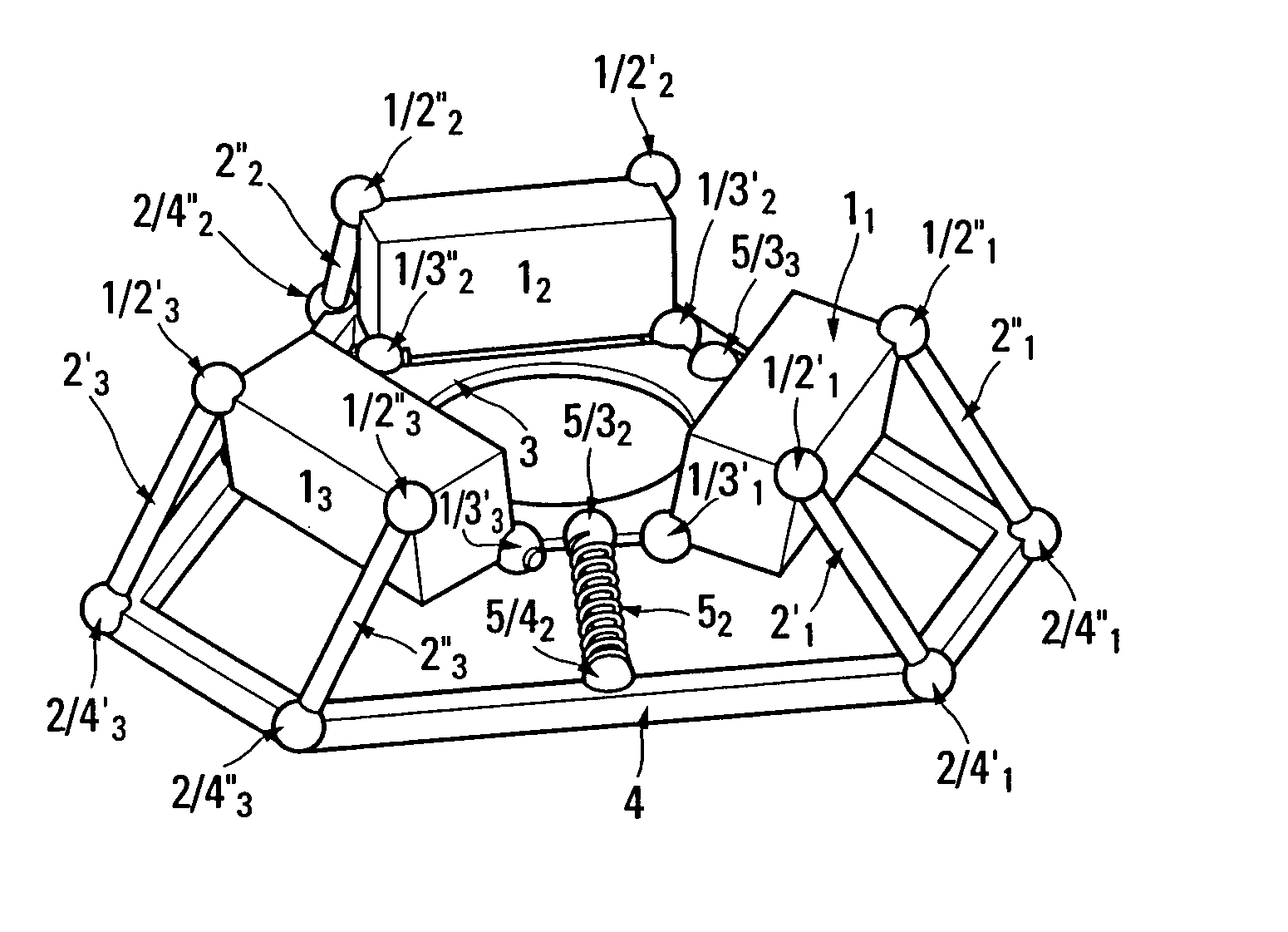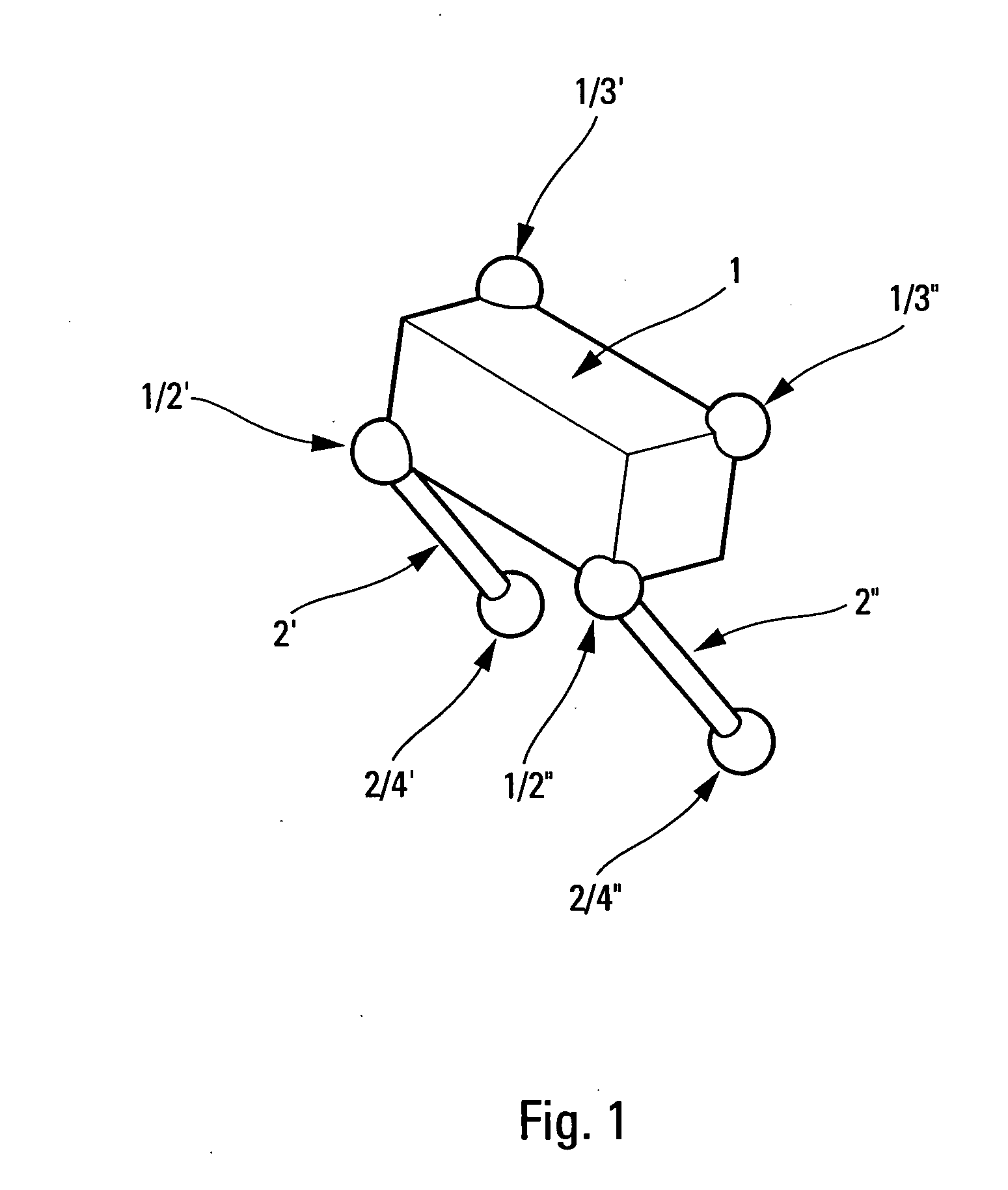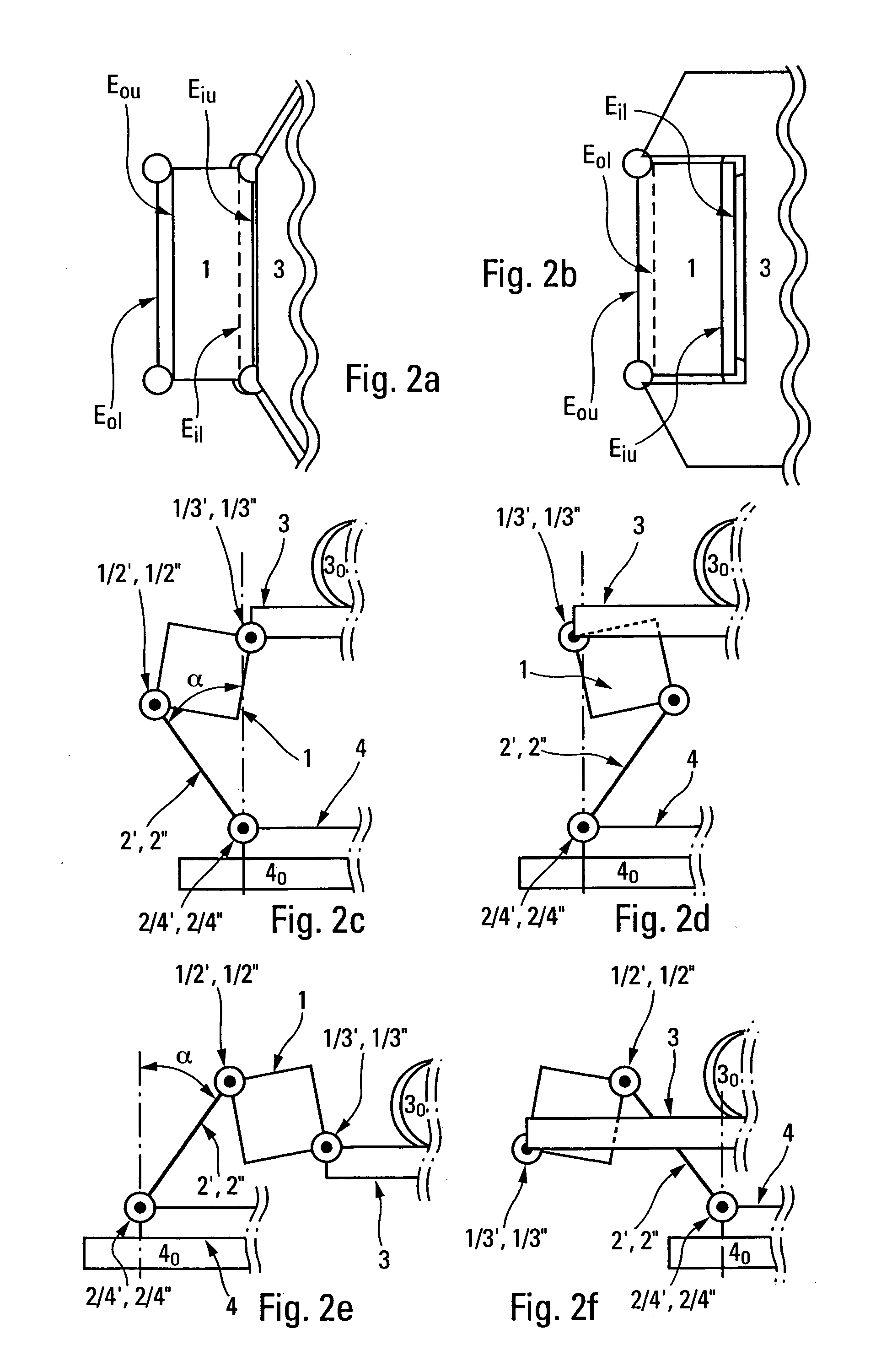Elementary and complex coupling devices, and their use
a coupling device and complex technology, applied in the direction of wind-induced force reduction, machine supports, other domestic objects, etc., can solve the problems of low rigidity, low rigidity, and low internal stress, and achieve the effect of less hinges and better stiffness properties
- Summary
- Abstract
- Description
- Claims
- Application Information
AI Technical Summary
Benefits of technology
Problems solved by technology
Method used
Image
Examples
first embodiment
[0076] The design of the complex coupling device incorporates ideal angles α of the arccos (sqrt (2 / 3))≈35° between the axis of the means for linking 2′1, 2″1, 2′2, 2″2, 2′3 and 2″3 of the three elementary coupling devices and the vertical direction as shown by FIG. 3d. These angles α are external, with which is meant that the means for linking 2′1, 2″1, 2′2, 2″2, 2′3 and 2″3 of the three elementary coupling devices are on the outside of an imaginary infinitely long cylinder 10 with its central axis parallel to the vertical direction and the centres of the means for hinging 2 / 4′1, 2 / 4″1, 2 / 4′2, 2 / 4″2, 2 / 4′3 and 2 / 4″3 on the surface of this cylinder.
second embodiment
[0077]FIGS. 4a, 4b, 4c and 4d show the complex coupling device which occupies more space in the horizontal mounting plane but results in a lower means for supporting 3 of the first object to be coupled 3o.
[0078] In this second embodiment, the means for linking 2′1, 2″1, 2′2, 2″2, 2′3 and 2″3 are connected to the respective means for stiffening 11, 12, and 13 at the ends of their outer upper edges Eou. Moreover, the means for supporting 3 is connected to the means for stiffening 11, 12, and 13 at the ends of their inner lower edges Eil.
[0079] The design of this second embodiment of the complex coupling device also incorporates ideal angles α of the arccos (sqrt (2 / 3))≈35° between the axes of the means for linking 2′1, 2″1, 2′2, 2″2, 2′3 and 2″3 of the three elementary coupling devices and the vertical direction as shown by FIG. 4d. These angles α are internal, with which is meant that the means for linking 2′1, 2″1, 2′2, 2″2, 2′3 and 2″3 of the three elementary coupling devices are ...
third embodiment
[0083]FIGS. 5a, 5b, 5c and 5d present the complex coupling device. This embodiment comprises three non-rotating box-shaped antennae 61, 62, and 63, which are rigidly connected in a highly integrated manner to the means for supporting 31, 32 and 33.
[0084] The third embodiment of the complex coupling device proposes to connect the means for linking 2′1, 2″1, 2′2, 2″2, 2′3, and 2″3 to the respective means for stiffening 11, 12, and 13 at the ends of their outer lower edges Eol. Moreover, the means for supporting 31, 32 and 33 are connected to the respective means for stiffening 11, 12, and 13 at the ends of their inner upper edges Eiu.
[0085] As clearly shown in FIG. 5a, FIG. 5b, FIG. 5c and FIG. 5d the third embodiment of the complex coupling device comprises six means for absorbing vibrations and shocks 5′1, 5″2, 5′2, 5″2, 5′3 and 5″3, materialised as, for example, wire rope isolators (cable mounts).
[0086] The means for absorbing vibrations and shocks 5′1, 5′2 and 5′3 are placed und...
PUM
 Login to View More
Login to View More Abstract
Description
Claims
Application Information
 Login to View More
Login to View More - R&D
- Intellectual Property
- Life Sciences
- Materials
- Tech Scout
- Unparalleled Data Quality
- Higher Quality Content
- 60% Fewer Hallucinations
Browse by: Latest US Patents, China's latest patents, Technical Efficacy Thesaurus, Application Domain, Technology Topic, Popular Technical Reports.
© 2025 PatSnap. All rights reserved.Legal|Privacy policy|Modern Slavery Act Transparency Statement|Sitemap|About US| Contact US: help@patsnap.com



